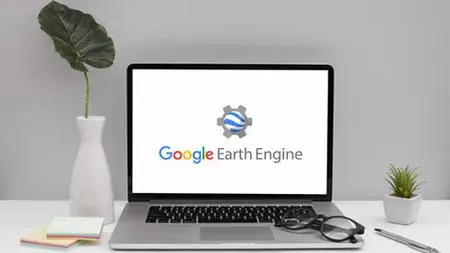Landcover Classification Using Google Earth Engine (Gee)
Published 6/2022
MP4 | Video: h264, 1280x720 | Audio: AAC, 44.1 KHz
Language: English | Size: 2.92 GB | Duration: 3h 30m
Published 6/2022
MP4 | Video: h264, 1280x720 | Audio: AAC, 44.1 KHz
Language: English | Size: 2.92 GB | Duration: 3h 30m
Google Earth Engine (GEE) - A cloud-based geospatial processing platform
What you'll learn
The fundamental concept of Google Earth Engine (GEE)
JavaScript Programming Language
Landcover Classification using Google Earth Engine
Create of confusion matrix and Accuracy Assessment
Identification of Forest coverage (Spatial and temporal distribution)
Forest Change Detection and generate of its statistics
Requirements
Basic Knowledge of GIS and Remote Sensing
Description
In Recent years, there has been a significant increase in the number of remote sensing (RS) datasets acquired by various spaceborne and airborne sensors with different characteristics (e.g., spectral, spatial, temporal, and radiometric resolutions). Working with petabytes of RS datasets is a challenging task and has its own special requirements. Cloud computing platforms are efficient ways of storing, accessing, and analyzing datasets on very powerful servers, which virtualize supercomputers for the user. These systems provide infrastructure, platform, storage services, and software packages in a variety of ways for the customers. Google Earth Engine (GEE) is a cloud-based geospatial processing platform which was launched by Google, in 2010. GEE uses Google's computational infrastructure and available open-access RS datasets. GEE is the most popular big geo data processing platform, facilitating the scientific discovery process by providing users with free access to numerous remotely sensed datasets. Earth Engine is available through Python and JavaScript Application Program Interfaces (APIs). The JavaScript API is accessible via a web-based Integrated Development Environment (IDE) called the Code Editor. This platform is where users can write and execute scripts to share and repeat geospatial analysis and processing workflows. The remarkable capabilities of GEE provide opportunities to employ this platform in broad variety of disciplines in all branches of Earth science studies. Land cover information plays a vital role in many aspects of life, from scientific and economic to political. Accurate information about land cover affects the accuracy of all subsequent applications, therefore accurate and timely land cover information is in high demand. In land cover classification studies over the past decade, higher accuracies were produced when using time series satellite images than when using single date images. Recently, the availability of the Google Earth Engine (GEE), a cloud-based computing platform, has gained the attention of remote sensing based applications where temporal aggregation methods derived from time series images are widely applied (i.e., the use the metrics such as mean or median), instead of time series images. In GEE, many studies simply select as many images as possible to fill gaps without concerning how different year/season images might affect the classification accuracy.
Overview
Section 1: Google Earth Engine (GEE) Overview
Lecture 1 GEE Overview
Lecture 2 JavaScript Programming and Image Filtering
Section 2: Landcover Classification
Lecture 3 Satellite Image Import and Visualization
Lecture 4 Landcover Classification using CART Classifier
Section 3: Accuracy Assessment
Lecture 5 Confusion Matrix and Accuracy Assessment
Section 4: Change Detection and Map Export
Lecture 6 Forest Change Detection
Lecture 7 Export of Map
Civil Engineer,Environmentalist,Forestry,Geologist,Urban Planner,Natural Resource Management,Bio diversity,Engineer,GIS Enthusiastic,GEE Enthusiastic



